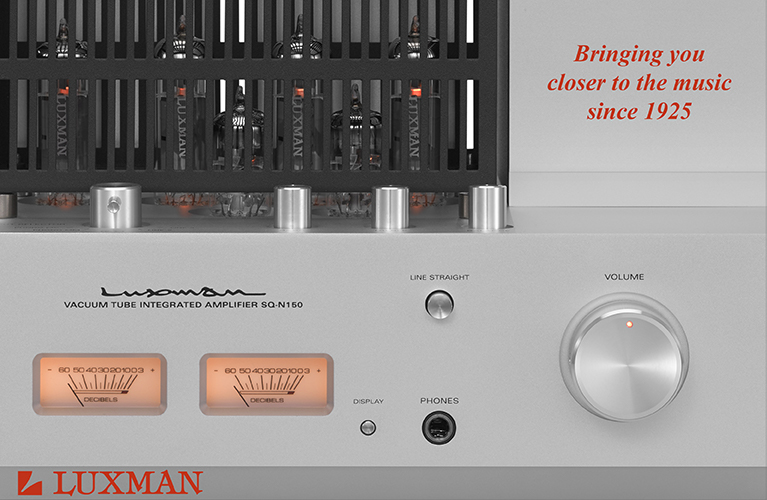Last month, Jeff Fritz conducted a SoundStage! Talks video interview with Bryston Ltd.’s VPs of marketing and sales, respectively James Tanner and Gary Dayton. Mostly they talked about Bryston’s Cubed series of amplifiers, now comprising nine models that range in power output from the 2.5B³ stereo amp’s 135Wpc ($4295, all prices USD) to the 28B³ monoblock’s 1000W ($24,390/pair). The Cubed line includes the B135³ integrated amplifier, which costs $6695-$8195 depending on the options selected (e.g., a DAC and phono stage) and is specified to output 135Wpc.
I was most intrigued with what Tanner and Dayton had to say about the model I’ve long considered the sweet spot in Bryston’s amplifier line, the 4B³ ($6795). It’s the seventh version of the original 4B, which sold for $1200 at its launch in 1978, and was followed, in turn, by the 4Be, the 4B NRB, the 4B ST, the 4B SST, and the 4B SST². Currently, Bryston offers a trade-in program that gives owners of any of those earlier iterations, regardless of condition, a generous credit toward a new 4B³.
Following the interview, I spoke with Tanner myself. He told me that the 4B put Bryston on the map of consumer hi-fi. Their very first power amp, the Pro 3, later renamed 3B, was launched in 1974 and was immediately popular in recording studios; the 3B is still in production today, having received the same version revisions the 4B has undergone.
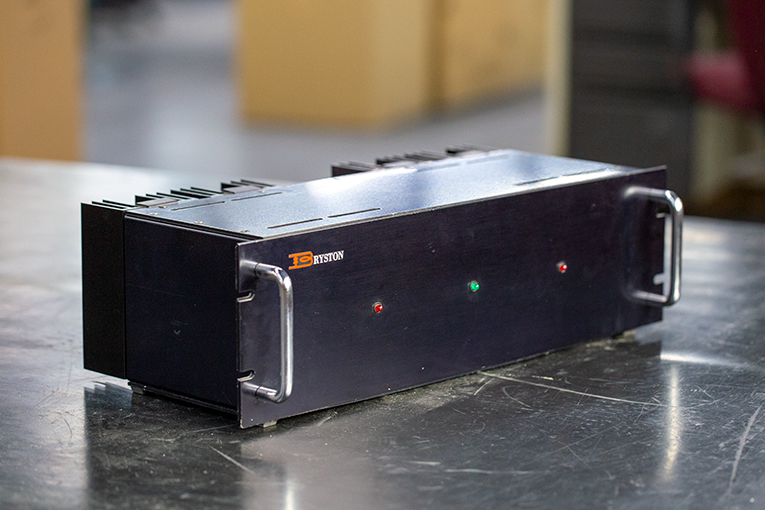 Bryston Pro 3/3B
Bryston Pro 3/3B
Backstory
Tanner told me that the 4B first caught the public eye in late spring of 1978, at the Consumer Electronics Show, back when CES took place twice a year, in January (Las Vegas) and June (Chicago). Bryston hadn’t rented their own exhibition room; instead, Tanner and Chris Russell, Bryston’s CEO then and now, carried the amp from room to room, trying to drum up interest. John Dahlquist, founder of Dahlquist Speakers, the company that still bears his name (it’s now owned by Regnar Hi Fidelity, of Patchogue, New York, on Long Island), agreed to hook it up to a pair of his speakers. He loved the sound. As Tanner tells it, while Dahlquist listened, Peter Aczel, founder and publisher of The Audio Critic, walked in -- he, too, liked what he heard, and subsequently reviewed and raved about the 4B in his magazine. From that review alone, Tanner said, Bryston “sold tons of them.”
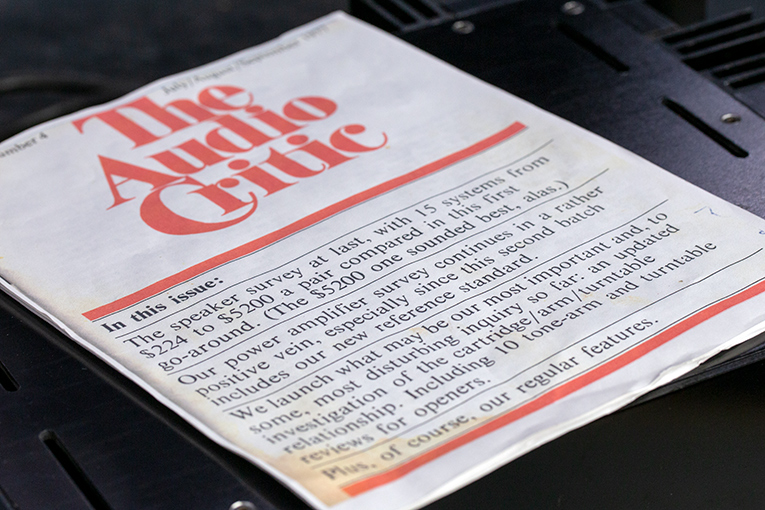
I suspect that they’ve also sold many units of subsequent versions of the 4B, which has been a staple of hi-fi since at least 1980, when I first got into audio. The 4B’s various iterations are well known to us SoundStagers -- many of us have heard, reviewed, used, and owned them.
I first heard the original 4B in 1980, at a friend’s grandmother’s house -- she had it driving a pair of KEF 105 speakers. She also had a Bryston 1B preamplifier, which had just been released, and, if memory serves me correctly, a Denon DP-1200 turntable. My friend’s grandma loved classical music, and was very proud of her stereo. During our visit she glanced at her husband, my friend’s grandfather, pointed to him, and said, “He can’t touch my stereo.” She said it jokingly, but it was clear she meant it.
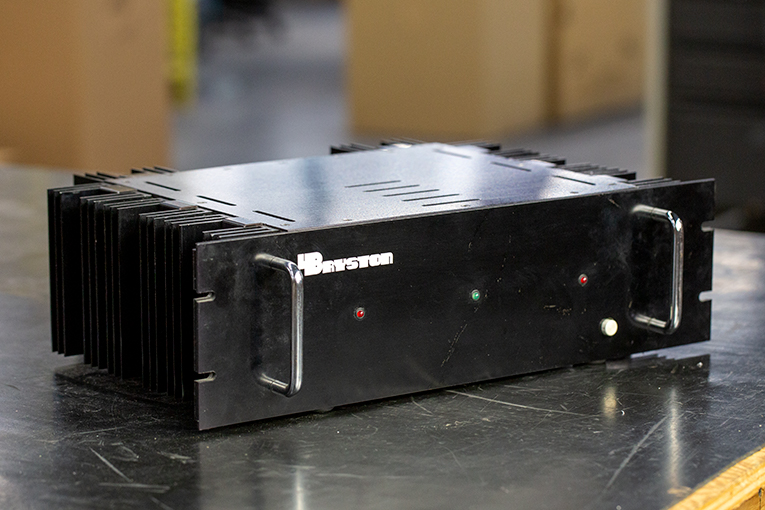 Bryston 4B
Bryston 4B
Over the years, SoundStage! Hi-Fi has reviewed the 4B SST, 4B SST², and 4B³. I owned a 4B SST² for a while, and for years have used a 4B NRB to measure speakers -- Canada’s National Research Council (NRC) owns at least four 4B NRBs, which they’ve used for various tests for many years, including measuring speakers in their anechoic chamber, where we’ve measured speakers since 2000. Most recently, Jason Thorpe bought a 4B³ for his reference system, which shocked us all -- Jason is basically a tube guy whose previous reference amp was an Audio Research VT100 Mk.I. To switch to a solid-state Bryston was a big shift (more about that in a bit).
The reasons . . .
The 4B’s popularity and long life in Bryston’s stable isn’t surprising to me. I think it comes down to four things that have remained consistent throughout all six versions of the amplifier: sound quality, measured performance, build quality, and Bryston’s 20-year warranty. In combination with what I think have always been reasonable prices, these things have made the 4B not only a consistently tremendous value, in my opinion, but also a benchmark against which to evaluate other solid-state amps.
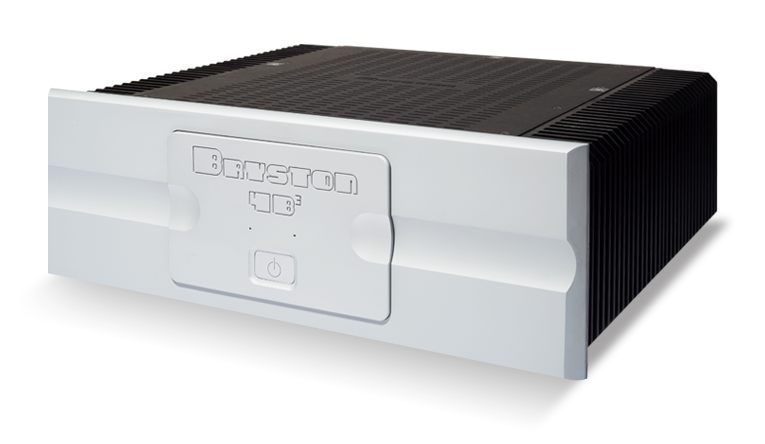
However, note that my list of the 4B’s attractions lacks one important thing: appearance. The 4B³ boasts a fancier faceplate than previous versions, but this amp has never been a looker. The 4B has always been mostly about function. Yet a no-nonsense, all-business appearance has always been part of the 4B’s -- and Bryston’s -- overall appeal. I think most will forgive both for that.
Sound quality
When I spoke with Jason Thorpe about the 4B³, he told me that it produces a sound so free of coloration that the amp is something “he doesn’t even think about anymore. It just sits on the bottom of the rack and does its thing.” That thing is to amplify and pass along the musical signal so transparently that Jason can write with a storyteller’s flair, as he does in his reviews, about the differences he hears between turntables, tonearms, cartridges, phono stages, and speakers. He doesn’t think the 4B³ imposes on the music any sound of its own; instead, it lets him hear every bit of the musical signal that runs through it.
This squares with Roger Kanno’s June 2017 review of the 4B³ for this site, in which he described the amp as being “by-the-book neutral,” and lauded it for its “amazing transparency, absolute control, and very smooth, very linear sound.”
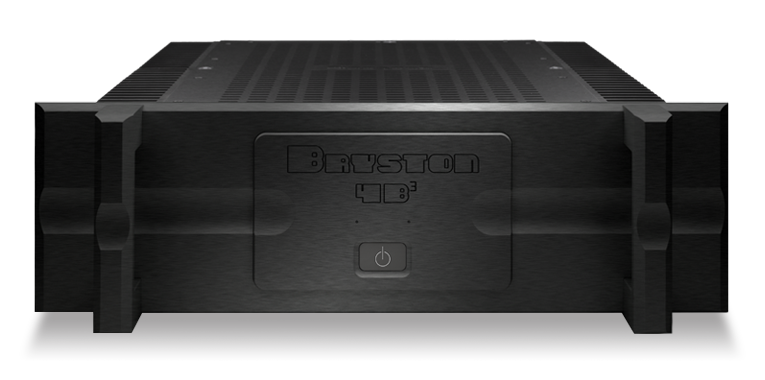
I know Jason’s system well, having heard it many times, and I have respect for Roger’s reviewing prowess, but I have my own experience to rely on. I owned a 4B SST², and would describe its sound -- or lack of any sound of its own -- in just the same ways.
But today I’m writing not about the 4B SST² but about the 4B³. What are the differences between them?
Measurements
One can say myriad things about a Bryston amp’s measured performance, but the main thing that distinguishes the newer Cubed models from the SST²s are not their specs of total harmonic distortion (THD) and intermodulation distortion (IM), which Tanner told me are roughly the same as in the preceding versions. Instead, it’s the reduction in noise made possible by the Cubed models’ new input stage, designed for Bryston by the late Alexandru Salomie. Tanner claims that this stage reduces noise by an astonishing 20dB, and is shared by all the Cubed models.
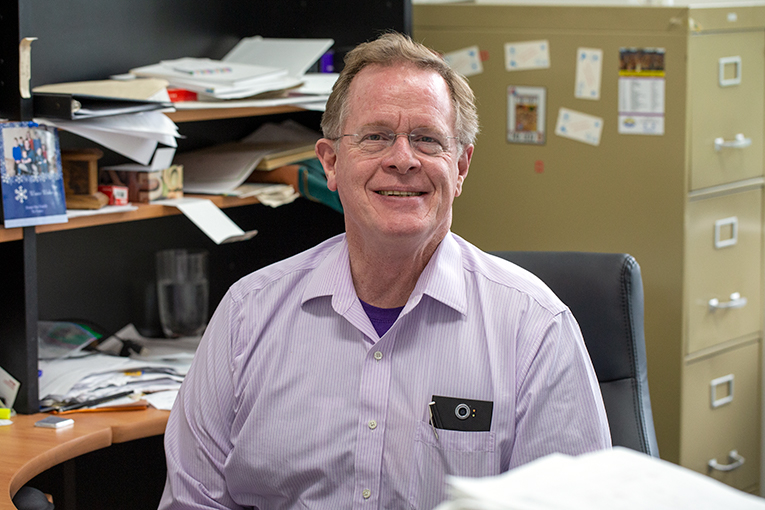 CEO Chris Russell
CEO Chris Russell
What set the 4B³ and 4B SST² apart from the 3B³ and 3B SST² are the 4B models’ higher specified power outputs: 300Wpc into 8 ohms or 500Wpc into 4 ohms for the 4B³, vs. a respective 200 or 300Wpc for the 3B³. And those power-output specs are conservative, as we discovered when we measured Roger Kanno’s review sample of the 4B³ and found that it could produce 354 or 552Wpc into those impedances. Our measurements also revealed extremely low distortion and noise of all types, as Tanner had claimed. All told, the 4B³’s measured performance is pretty much beyond reproach -- for $6795 or for any price.
But why don’t I think the 3B³ is the sweet spot in Bryston’s line? After all, its power output is still fairly high at 200Wpc into 8 ohms, and at $5795, it costs $1000 less than the 4B³. When I talked with Tanner about this, what he said indicated that the reason might go all the way back to 1978 . . .
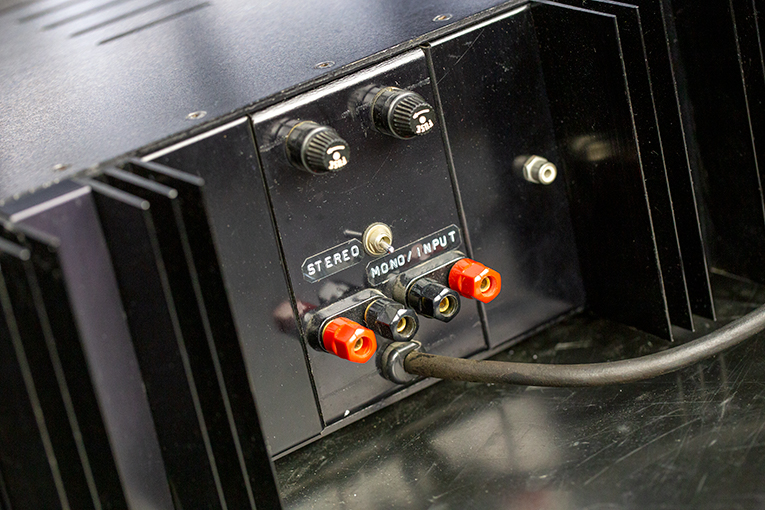 Bryston 4B rear panel
Bryston 4B rear panel
The original Pro 3, which became the 3B, produced 100Wpc into 8 ohms, and the original 4B put out 200Wpc (back then, few amplifiers that output more than 200Wpc into 8 ohms sounded good). Tanner thinks that the 4B’s having twice the power output of the 3B probably gave people peace of mind -- they knew their amp wouldn’t run out of steam driving whatever speakers they had. To a degree, I think the same holds true today, even if both amps are now far more powerful: having the 4B³’s 300 or 500Wpc on tap is more comforting than the 3B³’s 200 or 300Wpc -- most users will never get the 4B³ to clip, but they might with the 3B³.
But there’s another thing: The various versions of the 3B haven’t been priced all that much lower than the contemporaneous 4B versions. Today, a 3B³ costs $5795; to get a 4B³, you have to cough up only another $1000 -- 50% more power into 8 ohms, for only 17.5% more cash. That seems too good a deal to pass up. I’d pony up another grand for a 4B³ any day of the week. Someone who really wanted to save money would probably drop to the 2.5B³, which costs $2500 less than the 4B³. To me, that leaves the 3B³ in a less-desirable position than the two other models.
Build quality and warranty
It’s hard to talk about Bryston’s build quality without bringing up their famously long warranty of 20 years on their analog electronics and loudspeakers. (Bryston warrants their digital electronics for only five years, because of the rapid pace of change and obsolescence in this field, and the resulting difficulty of finding parts not many years down the road.) While it’s one thing to build good products that last, as Bryston does, it’s another to guarantee them for so long. Nor do there seem to be any catches, as the following anecdotes make clear.
At a local hi-fi shop in about 1990, before I became an audio reviewer, I saw an original Bryston 4B. It was beat up -- its heatsinks were bent this way and that, and its entire case was so scratched it didn’t look black anymore, but a kind of gray -- it looked as if every surface of it had been dragged back and forth across a concrete floor. But its top panel was off, and inside it looked almost brand-new. The owner of the shop told me that a musician had been hauling it, unprotected, in and out of his van for years, and finally one channel had blown up. This amp had been abused to a point that, had most other audio manufacturers received so abused a product for in-warranty repair, I’m sure they’d have refused. But this shop shipped it off to Bryston, who returned it with almost everything inside replaced and now operating to spec. I’d seen other impressive instances of Bryston service, but that poor, battered 4B stuck with me.
Late one night in about 2000, while eating in Zet’s, a diner near Toronto’s Pearson International Airport, I overheard a guy saying that he used to be a Bryston service tech. (Bryston is based nearby, in Peterborough, Ontario.) Shortly afterward I got his attention, told him the tale of that beat-up 4B, then asked, “Is that true? Do they really fix everything like that?”
“Yeah, they do,” he said. “I’ve never seen them question anything. We always just fixed stuff, no matter what, and sent it back to the customer.”
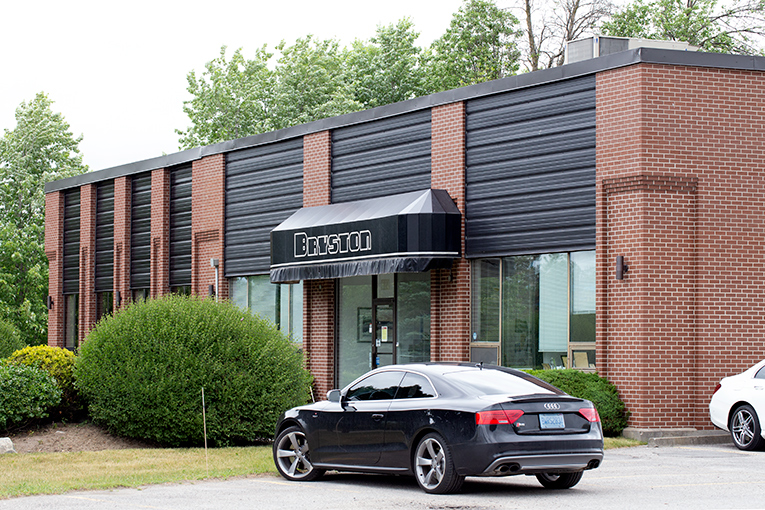
About five years ago I was talking with Brian Russell, Bryston’s president. I told him those two stories, and asked why Bryston has this policy, which seems to me a hell of a burden for a company. His reply was matter-of-fact: “It’s just easier for everyone.” That’s all he said.
With warranties on hi-fi electronics being as low as one year, but more typically two to five years, even for products that cost in the tens or even hundreds of thousands of dollars, Bryston’s 20-year warranty seems equivalent to forever. That said, I’m 100% sure you can find an amp built as well as a Bryston that might last a very long time -- lots of good companies out there make products that I’ve seen or owned, and have admired for how well made they are -- but no other audio company I know warrants their gear for two decades. In terms of standing behind a product, Bryston sets the standard for the industry. It provides the customer with unique peace of mind.
Yes or no?
I’ve described here the legacy of a single model of Bryston power amplifier, a legacy that now spans 42 years. It might get you interested to look at current and/or past versions of the Bryston 4B, to try to hear one, and that would be a good thing. But I have a caveat: My copious praise for the 4B doesn’t guarantee that it or one of its forebears will be for everyone. Some shoppers might put more stock in appearance, and look for something prettier. Others might not like the 4B’s ultra-transparent sound, which would make its lack of colorations and extremely low noise and distortion measurements moot. Others may have no need for all the power it can provide, while still others might need even more power, which might have them looking at another Bryston model or to another brand. And some audiophiles flip their gear on the used market so frequently that a 20-year warranty is irrelevant.
Despite all the good things I and other SoundStage! writers have said about the Bryston 4B³, I could go on about why a 4B of this or any generation might still be the wrong amp for some buyers. But those buyers whose boxes it checks would be hard-pressed to do better at this price -- and I think that’s why the 4Bs have been winners for so long. Here’s to another 42 years of 4Bs -- and to 42 more years of Bryston making this legendary amp even better.
. . . Doug Schneider
das@soundstagenetwork.com























